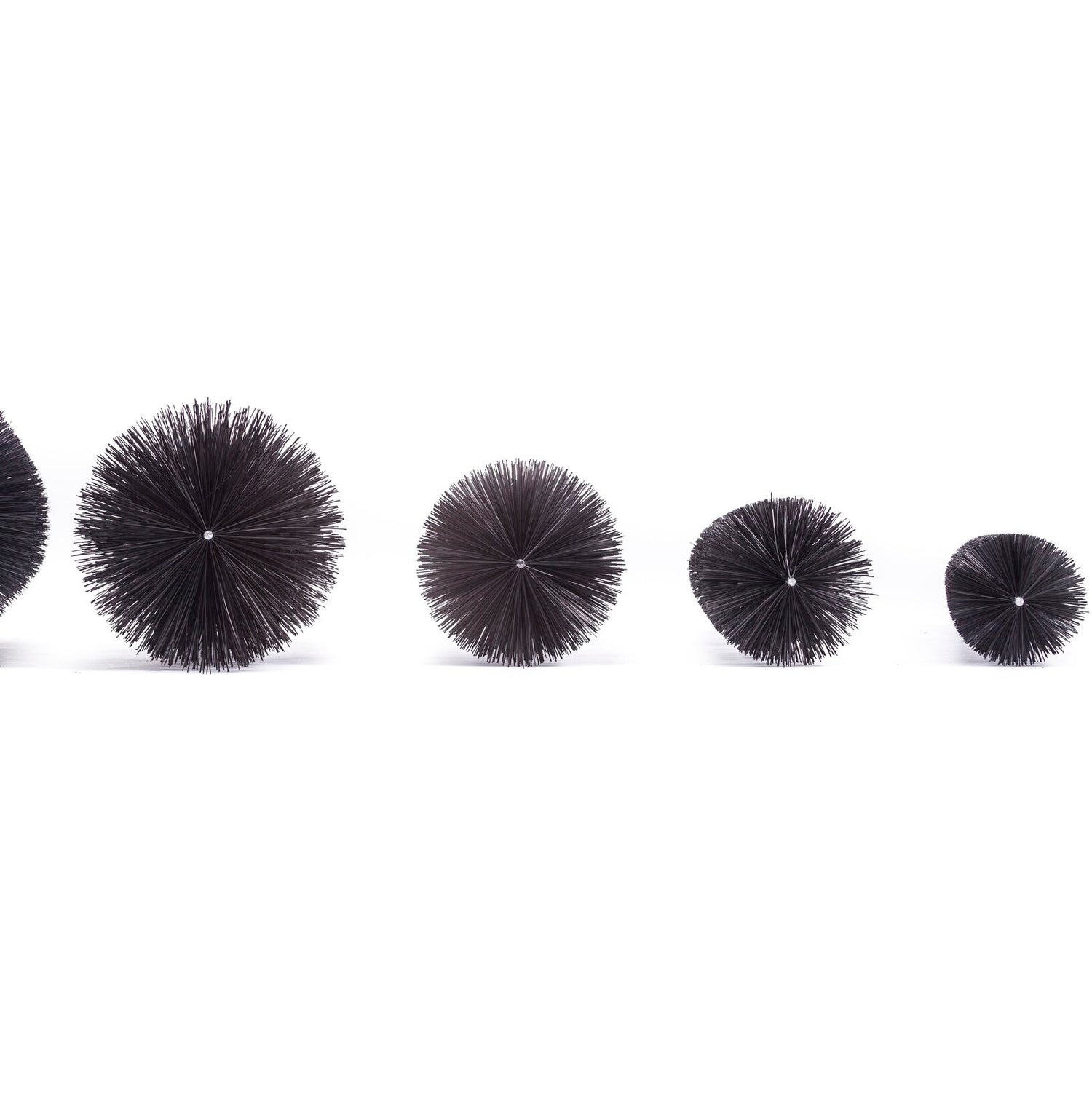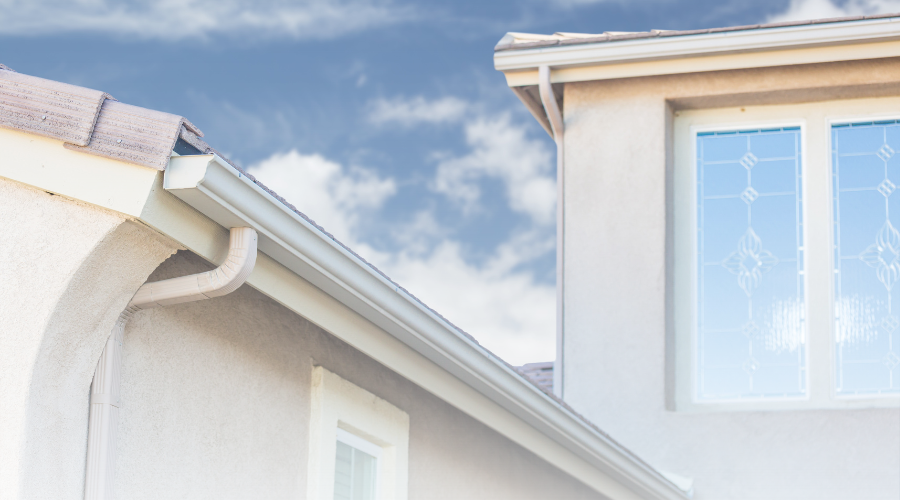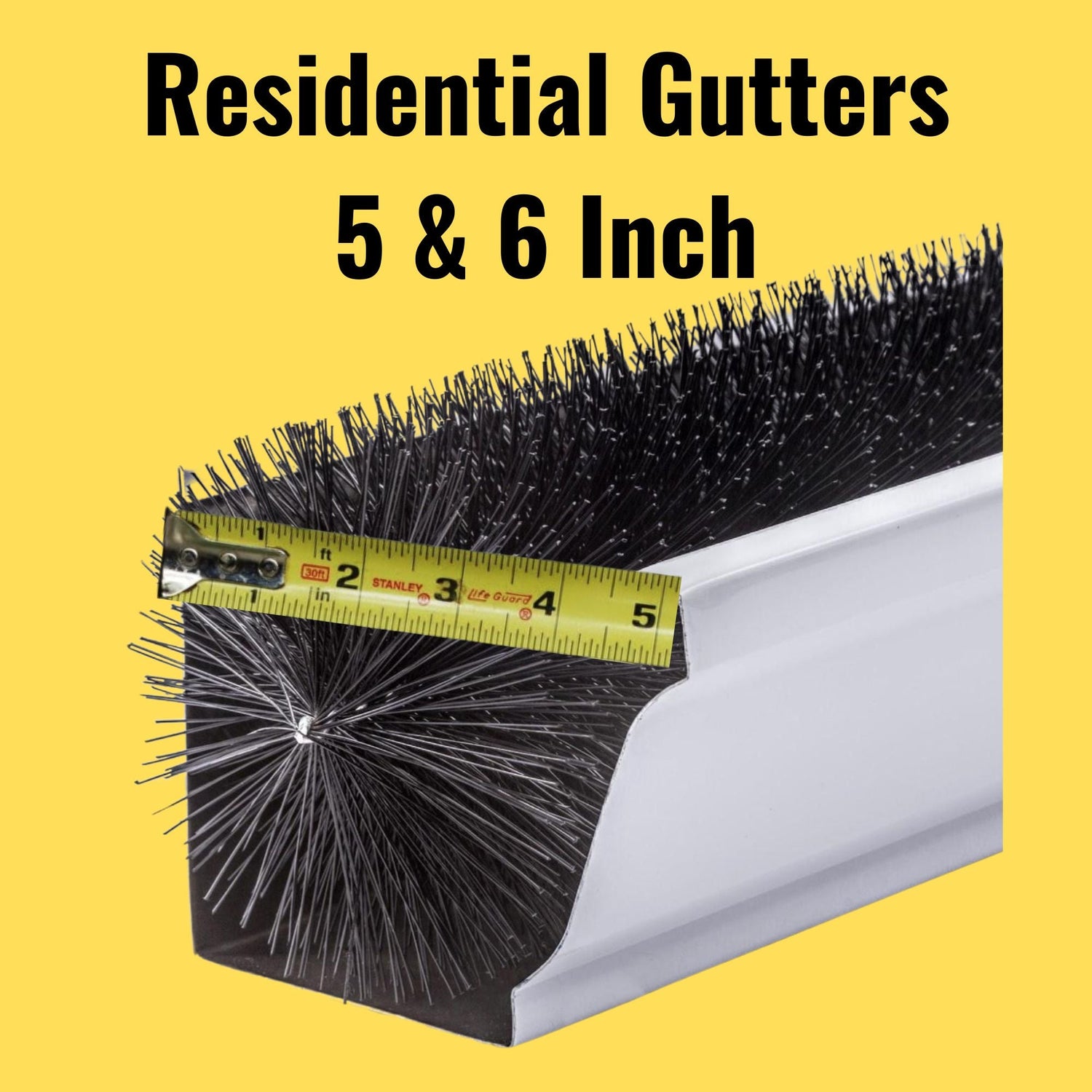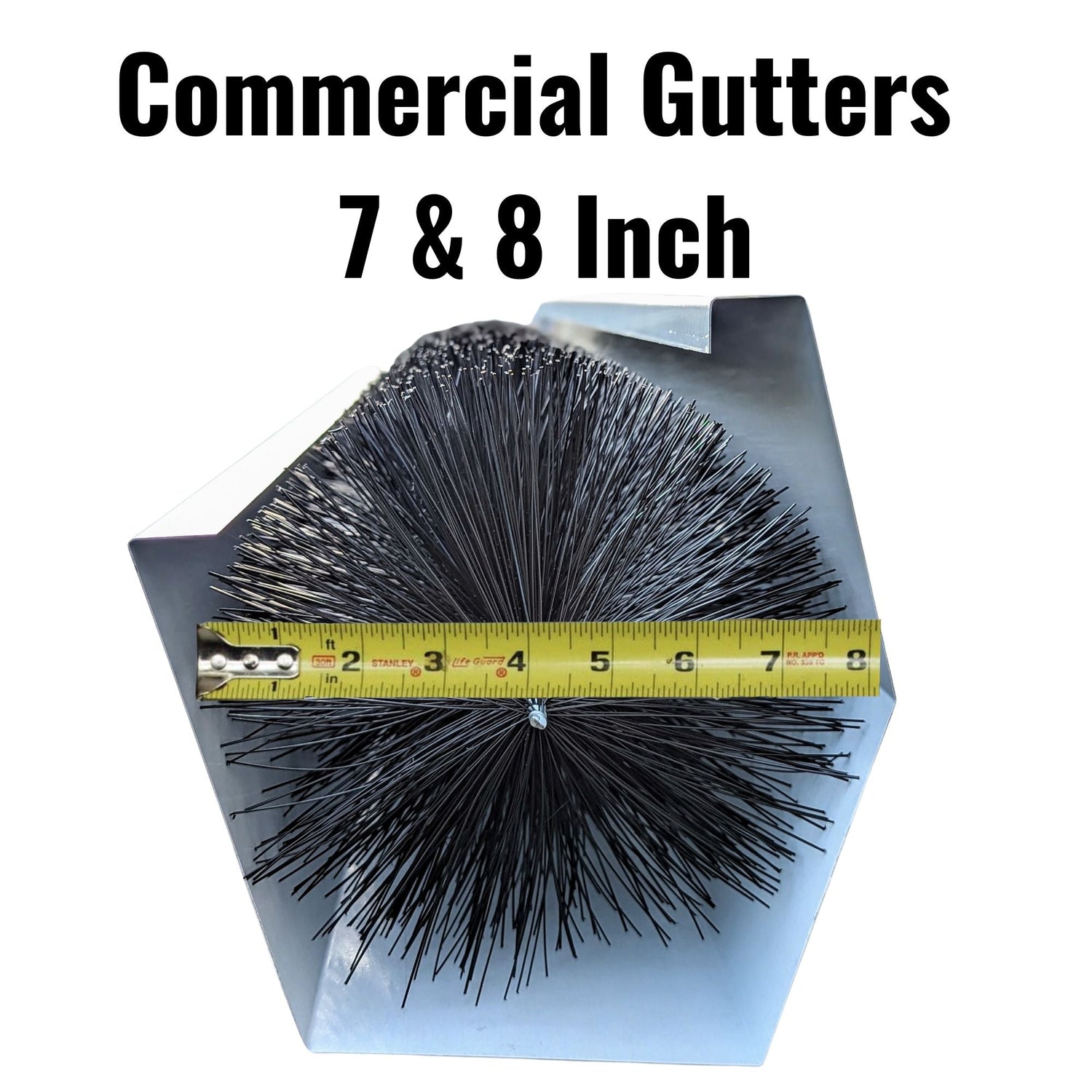When it comes to maintaining your home, the importance of a good roof gutter system cannot be overstated. Gutters protect your home from water damage by directing rainwater away from the foundation, walls, and other vulnerable areas. With various types of roof gutters available, choosing the right one for your home can be challenging. This guide will explain the different types of roof gutters, their advantages and disadvantages, and how roof gutter guards can enhance their performance.
Why Gutters Matter
Before diving into the types of roof gutters, it’s important to understand their role. Gutters help to:
- Prevent Water Damage: By directing rainwater away from your home, gutters protect your foundation, walls, and roof from water damage.
- Reduce Erosion: Gutters minimize soil erosion around your home by controlling the flow of rainwater.
- Prevent Basement Flooding: Properly functioning gutters reduce the risk of basement flooding by directing water away from the foundation.
- Protect Landscaping: Gutters help to prevent water from washing away landscaping features like mulch and plants.
Types of Roof Gutters
There are several types of roof gutters, each with its own benefits and drawbacks. The most common types include K-style, half-round, box, fascia, and custom-built gutters. Let’s take a closer look at each type.
1. K-Style Gutters

K-style gutters are the most popular choice for residential homes. Their name comes from their profile, which resembles a portion of the script letter "K" when viewed from the side. These gutters are typically made from aluminum,plastic, vinyl, or galvanized steel, offering a range of options to suit different budgets and durability needs.
- Materials: Aluminum, vinyl, galvanized steel.
- Most Common Sizes: Available in 5-inch and 6-inch widths.
- Installation: Can be installed as seamless or sectional gutters.
Advantages
- Aesthetic Appeal: K-style gutters have a decorative shape that complements modern homes.
- High Capacity: Their flat back and bottom allow them to hold more water compared to other styles.
- Durability: K-style gutters are less likely to bend or warp due to their shape and material strength.
Disadvantages
Complex Installation: The shape can make installation more challenging, often requiring professional help.
2. Half-Round Gutters

Half-round gutters have a semicircular shape and are often found on older or historic homes. These gutters can add a touch of elegance and are often made from materials such as copper, which can develop a patina over time, adding to their charm.
- Materials: Copper, aluminum, galvanized steel.
- Common Sizes: Typically found in 5-inch and 6-inch widths.
- Installation: Usually installed with brackets that support the gutter from within the gutter or below.
Advantages
- Classic Look: Their traditional appearance makes them ideal for historic or vintage homes.
- Easy Cleaning: The smooth, rounded shape makes them easy to clean.
- Efficient Water Flow: Their shape allows water to flow more freely, reducing the likelihood of clogs.
Disadvantages
- Lower Capacity: They can’t hold as much water as K-style gutters, making them less suitable for areas with heavy rainfall.
- Less Durable: They are more prone to bending or denting from a ladder, especially when made from softer materials like aluminum.
3. Box Gutters
Box gutters are commonly used on commercial buildings but can also be found on some residential homes. They are built into the roof structure, making them less visible from the ground. Box gutters are often custom-designed to fit the specific roof they are installed on, ensuring optimal performance.
- Materials: Galvanized steel, copper, stainless steel.
- Common Sizes: Custom sizes to fit specific roof designs.
- Installation: Integrated into the roof structure, requiring professional installation.
Advantages
- High Capacity: Box gutters can handle large volumes of water, making them ideal for areas with heavy rainfall.
- Low Visibility: Since they are built into the roof, they are less noticeable and can provide a cleaner look to the building’s exterior.
Disadvantages
- Complex Installation: Installation is more complicated and more customized and often requires professional assistance.
- Maintenance Issues: They can be harder to access for cleaning and maintenance due to their integration into the roof structure.
4. Fascia Gutters
Fascia gutters were originally made to fit the fascia board of certain structures. They provide a sleek, seamless appearance and are often chosen for their modern, clean lines. Fascia gutters are typically fabricated on-site to achieve a “seamless” appearance and long lengths.
- Materials: Aluminum, galvanized steel and sometimes copper.
- Common Sizes: 5” Fascia Gutter, 7 inch fascia gutter and custom sizes tailored to fit the fascia board.
- Installation: Seamless installation reduces the risk of leaks.
Advantages
- Custom Fit: Being custom-made ensures a perfect fit to your roof’s fascia board.
- Seamless Design: The lack of seams reduces the risk of leaks and provides a cleaner look.
- Deep Design: Fascia gutters are deep gutters that carry high volumes of water.
Disadvantages
- Higher Cost: Custom fabrication can make fascia gutters more expensive.
- Installation Time: The custom nature of fascia gutters can result in longer installation times.
5. Custom-Built Gutters
Custom-built gutters are designed to meet specific needs and preferences. They can be made from various materials and tailored to fit unique architectural designs. Custom-built gutters can be particularly beneficial for homes with unusual roof shapes or specific drainage needs.
- Materials: Copper, aluminum, galvanized steel, stainless steel.
- Common Sizes: Fully customizable to fit any roof design.
- Installation: Requires skilled professionals for precise installation.
Advantages
- Tailored Design: Custom gutters can be designed to match the specific aesthetic and functional needs of your home.
- Material Flexibility: You can choose from a variety of materials, including copper, steel, and aluminum.
Disadvantages
- Cost: Custom-built gutters are typically more expensive due to the bespoke design and materials.
- Installation Expertise: Requires skilled professionals for proper installation.
Materials Used in Roof Gutters
Roof gutters can be made from several materials, each with its own set of benefits and drawbacks. The most common materials include aluminum, copper, steel, vinyl, and zinc.
1. Aluminum Gutters

Aluminum is the most popular material for roof gutters due to its balance of cost, durability, and ease of installation.
Advantages
- Lightweight: Easy to handle and install.
- Corrosion-Resistant: Does not rust, making it ideal for wet climates.
- Cost-Effective: Offers good performance at a reasonable price.
Disadvantages
- Prone to Dents: Can be easily dented or bent by heavy impacts.
- Requires Maintenance: Needs regular cleaning to prevent clogs and maintain appearance.
2. Copper Gutters

Copper gutters are known for their durability and aesthetic appeal, often used on high-end or historic homes.
Advantages
- Long-Lasting: Extremely durable and can last for decades.
- Aesthetic Appeal: Develops a patina over time, adding to its visual charm.
- Low Maintenance: Requires less maintenance compared to other materials.
Disadvantages
- Expensive: One of the most costly gutter materials.
- Complex Installation: Requires professional installation due to the need for soldering which requires skill and expertise..
3. Steel Gutters

Steel gutters are strong and durable, suitable for areas with extreme weather conditions.
Advantages
- High Strength: Can withstand heavy impacts and extreme weather.
- Long Lifespan: Highly durable with a long service life.
- Solder: Galvanized steel gutters can be soldered.
Disadvantages
- Rust-Prone: Requires regular maintenance to prevent rust and corrosion when the galvanized coating wears.
- Heavy: Can be More challenging to install due to its weight.
4. Vinyl Gutters

Vinyl gutters are lightweight and affordable, making them a popular choice for DIY projects.
Advantages
- Cost-Effective: One of the least expensive gutter materials.
- Easy Installation: Lightweight and easy to install without professional help.
- Corrosion-Resistant: Will not rust or corrode.
Disadvantages
- Less Durable: Can become brittle and crack in extreme temperatures.
- Color Fading: Prone to fading and discoloration over time.
- Joints every 10 feet: Not seamless, often only available in 10 foot sections that need to be joined.
5. Zinc Gutters

Zinc gutters are durable and low-maintenance, often used on high-end homes.
Advantages
- Long-Lasting: Can last for decades with minimal maintenance.
- Aesthetic Appeal: Develops a natural patina that enhances its appearance.
- Corrosion-Resistant: Naturally resistant to rust and corrosion due to the zinc coating.
Disadvantages
- High Cost: More expensive than other gutter materials due to lack of availability..
- Professional Installation: Requires skilled professionals for proper installation.
Enhancing Gutter Performance with Roof Gutter Guards
Roof gutter guards are an effective way to prevent debris from clogging your gutters, reducing the need for frequent cleaning and maintenance. Several types of roof gutter guards are available, including mesh screens, foam inserts, and brush guards.
1. Mesh Screens

Mesh screens are placed over the gutter to allow water in while keeping leaves and debris out.
Advantages
- Effective Debris Blocking: Prevents most debris from entering the gutter.
- Durable: Made from long-lasting materials like stainless steel or aluminum.
Disadvantages
- Clogging Potential: Smaller debris can still clog the mesh, requiring frequent and early cleaning.
- Installation: May require professional installation for optimal performance.
- Ramp to Overshoot: Debris lays on them creating a ramp that causes the rain water to overshoot the gutter.
2. Foam Inserts

Foam inserts fit inside the gutter, allowing water to pass through while blocking debris.
Advantages
- Easy Installation: Simple to install without professional help.
- Effective Water Flow: Allows water to flow freely while blocking debris.
Disadvantages
- Maintenance: Can require regular cleaning to remove trapped debris.
- Durability: May degrade over time, dry out and curl from the sun.
- Frequent Maintenance. The pores are very small so they clog quickly and are difficult to clean
- Disposable but not really: Since they are difficult to clean due to the tight pores, people often just throw them away when they clog.
3. Brush Guards

Brush guards are cylindrical brushes that are self fitting and sit inside the gutter, blocking debris while allowing water to flow between the bristles.
Advantages
- Easy Installation: Simple to install and remove for cleaning.
- Cost-Effective: Generally affordable compared to other types of guards.
Choosing the right type of roof gutter and material for your home is essential for effective water management and protection against water damage. Whether you prefer the modern look of K-style gutters, the classic appeal of half-round gutters, or the custom fit of fascia gutters, each type offers unique benefits. Additionally, enhancing your gutter system with roof gutter guards can significantly reduce maintenance and prolong the life of your gutters.
By understanding the different types of roof gutters and their advantages and disadvantages, you can make an informed decision that best suits your home’s needs and aesthetic. Regular maintenance and the addition of gutter guards can help ensure your gutter system remains functional and efficient, protecting your home from the damaging effects of water.
Key Takeaways
- K-style gutters are popular for their high capacity and decorative look.
- Half-round gutters offer a classic appearance and easier cleaning.
- Box gutters are integrated into the roof and ideal for high-capacity needs.
- Fascia and custom-built gutters provide seamless, tailored solutions as well as depth and volume.
- Materials like aluminum, copper, steel, vinyl, and zinc each have unique benefits.
- Roof gutter guards, such as mesh screens, foam inserts, and brush guards, enhance gutter performance by preventing debris buildup.
About GutterBrush
At GutterBrush, we offer innovative gutter protection systems for both Residential and Commercial properties. Our unique brush technology, recognized by Home & Garden TV, The Family Handyman, At Home with Gary Sullivan, and Home Depot, ensures your gutters remain clog free while filtering rainwater, reducing the need to frequently buy gutter guards.
A family-owned company serving American homesteads since 2004, we're proud to have over 1200 5-star reviews, supported by a 10-year material warranty and a 365-day refund policy.




